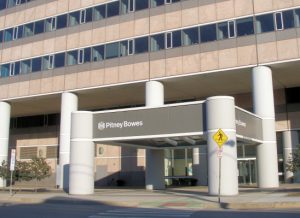Say what you will about the US health care system; if you’re trying to stay healthy in space, it’s a dream. Just ask Mike Massimino, a former NASA astronaut who has flown to space twice for extended stays.
Getting medical treatment on the International Space Station is complicated, so NASA does its best to ensure astronauts are in peak physical condition before they leave for the final frontier. This involves a regimented exercise schedule in the weeks leading up to launch, as well as an extensive physical examination. If NASA doctors find anything that might cause serious health problems for an astronaut, like a predisposition to getting kidney stones, the astronaut probably won’t fly.
“You don’t have to be an Olympic athlete, but they want to make sure you’re healthy enough to do your job,” says Massimino. “I was in the best shape of my life before my two flights.”
In the week leading up to a launch, NASA keeps its astronauts in quarantine to avoid sending any germs to orbit. The ISS is sealed, so a sick astronaut could quickly turn the world’s most advanced laboratory into a petri dish.
Once in space, NASA astronauts are expected to exercise for two hours a day, six days a week on the ISS. But designing a zero-gravity gym was no small engineering challenging, says Massimino. You can’t just hit the bench press and pump iron, because in microgravity you can lift “600 pounds with the tip of your finger.”
So NASA developed special resistance-training devices that simulate weight lifting and hold an astronaut in place as they run on the treadmill or take a spin on the stationary bike. “We have astronauts coming back in better shape than when they left sometimes,” he adds.
If an astronaut does fall ill while on the space station, there’s always at least two fellow astronauts who are trained as medical officers, which Massimino says is not so different from becoming an EMT. In the event of an accident, a robust first-aid kit on the space station has enough medical supplies to treat minor wounds. But a major invasive surgery just isn’t practical. “If someone needed that, they would deorbit” and be taken home, the astronaut explains. “It’s easier to do that.”
So far, no medical incident has warranted deorbiting an astronaut. But as NASA fleshes out its plans to establish permanent, off-world bases on the moon and Mars, it will have to grapple with the prospect of performing serious medical procedures out there. For now, though, Massimino says astronauts can rest easy knowing they have access to some of the best medical treatments money can buy—even when they’re hundreds of miles away from Earth.
For more about staying fit in orbit and some pro tips for puking in microgravity, check out the video above.
More Great WIRED Stories
- The female founders disrupting the vagina economy
- Silicon Valley cynicism in the age of Trump and Zuckerberg
- Movie talk and the rise of review culture
- Jack Conte, Patreon, and the plight of the creative class
- The tech helping dogs learn to “talk” with humans
- 👁 Prepare for the deepfake era of video; plus, check out the latest news on AI
- 💻 Upgrade your work game with our Gear team’s favorite laptops, keyboards, typing alternatives, and noise-canceling headphones



